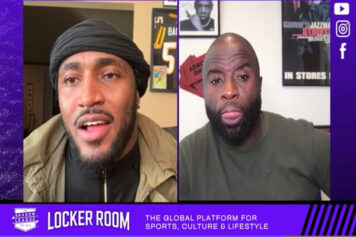Darryl Dawkins was born in Orlando, Florida on January 11, 1957. He was destined for international notoriety from the very start and his power, speed and size made it almost a forgone conclusion that the canvas upon with which this Picasso would paint his greatest works was on the hardwood of the National Basketball Association. His former high school basketball coach at Maynard Evans High School once said Dawkins was the best high school basketball player ever and one of the best people he had ever met. High praise in a sport in which narcissism and selfishness are seen as attributes to a certain extent.
In 1974 Hall of Fame center Moses Malone was drafted with the first pick overall straight out of high school. Malone would make a tremendous impact in his first season by averaging 18 point and 14 rebounds in his rookie season. But Dawkins was bigger and, according to some, better in high school than Malone. Thus, Dawkins was drafted with the fifth pick overall in the NBA draft behind David Thompson, David Meyers, Marvin Webster and Alvan Adams by the Philadelphia 76ers at the tender age of 18 in 1975. He was the first high school player to be drafted directly into the NBA. The New York Daily News reported that New York Knicks guard Walt Frazier once said Dawkins teachers must have called him Mr. Darryl, a joke regarding his apparent size and physical gifts.

At 6 ft 11 inches tall and weighing 251 pounds, Darryl Dawkins was the very definition of a manchild from the very beginning. By comparison, Moses Malone was 6 ft 10 inches tall and weighed 215 pounds. However, it wasnt Moses that prognosticators would crave to compare him to but Wilt Chamberlain, then the consensus greatest player of all-time. A mammoth burden for anyone to shoulder. Anyone but Dawkins, that is. In typical Double D fashion, he joked about it.
Once he was asked by the New York Daily News about the comparisons he drew to Wilt Chamberlain early in his career and responded: “When I walked into the league, they wanted me to be Wilt Chamberlain right awaywithout one minute of college ball. I can’t be Wilt Chamberlain. Wilt is much taller than me.”
Such gut-busting quotes were vintage fair for Darryl Dawkins. Though his touch around the basket was feathery, Dawkins didnt have a bunch of low post moves like a Kevin McHale or a Hakeem Olajuwon, but his strength, size and athleticism allowed him to carve out space very close to the basket more often than not. And when that happened the end result was a powerful, explosive dunk that pummeled the confidence of his opponents with rim-shattering ferociousness. The rim-shattering portion of that prior statement isnt hyperbole in the least. It is actual, factual and nonfictional.

In November of 1979, during a game against the Kansas City Kings, Darryl Dawkins flushed a dunk through the rim with such Herculean force that the backboard shattered. He followed that up three weeks later at the Spectrum arena in Philadelphia. Seeing the potential for a dangerous and horrifying trend unfolding, the NBA made moves to put that baby to bed permanently by passing an ordinance that would result in a fine, and possible fine and suspension. Dawkins is the reason why the breakaway rim was invented.
His dunks came to have a life of their own. He christened his first glass shattering incursion as The Chocolate-Thunder-Flying, Robinzine-Crying, Teeth-Shaking, Glass-Breaking, Rump-Roasting, Bun-Toasting, Wham-Bam, Glass-Breaker-I-Am-Jam. Others were called Rim Wrecker, Go-Rilla, the Look Out Below, the In-Your-Face Disgrace (my personal favorite) and many other names, each more colorful and inventive than the one before (Editor’s note: can’t forget the most in your face, to the point, period end of story dunk, “Your Mama”).

As legend has it, legendary performer Stevie Wonder originally gave him the name Chocolate Thunder and it stuck.
Dawkins averaged 12 points, 6 rebounds and 1.4 block shots per game in his 12-year NBA career. A career in which various injuries plagued him and prevented Dawkins from reaching his full potential. He only played in every regular season game twice in his career, both with the New Jersey Nets.
Many believe his most productive year was 1979-80 when Dawkins helped push the Philadelphia 76ers to the NBA Finals, which they eventually lost in six games to the Los Angeles Lakers.
A string of consecutive early postseason exits caused management to finally decide to shake things up and Dawkins was shipped to the New Jersey Nets and backup center Caldwell Jones was shipped to the Houston Rockets-making room for Moses Malone. The Sixers would win the NBA Finals the following year. Darryl Dawkins would play only two productive seasons with the Nets before being moved again, this time to the Utah Jazz for a season, then the Detroit Pistons. He would retire from the National Basketball Association in 1989. However, Darryl would continue to play professional basketball for the Harlem Globetrotters, in the CBA and overseas up until 2000.
Following his playing days, Dawkins would go on to coach in the United States Basketball League, the American Basketball Association, and at a junior college.
Darryl Dawkins had a reputation for being a peoples person and smiled a great deal. His charisma and flashy personality was almost as brilliant as his dunks.
On August 27, 2015 Darryl Dawkins died of an apparent heart attack in Allentown, Pennsylvania at the age of 58-years-old.
Some will remember the way he made strangers feel special with a smile and a wink, others will recall his witty quotes. Most will remember his funkdafied dunks with intergalactic names. But far too many will recall him as an immense talent that injury cheated out of possible superstardom.
Rest In Power Darryl Dawkins. There will never be another like you.



